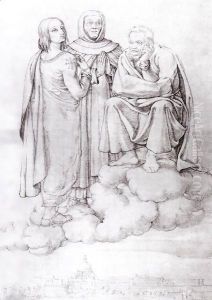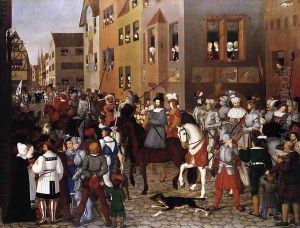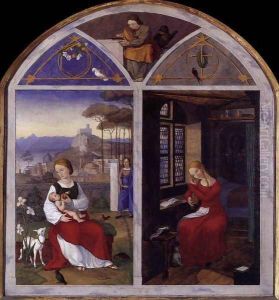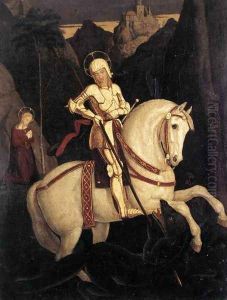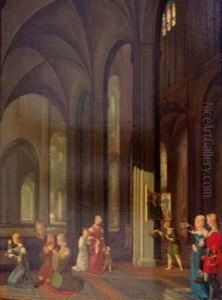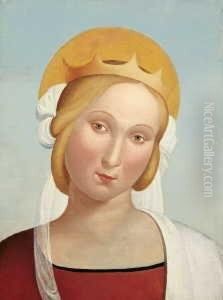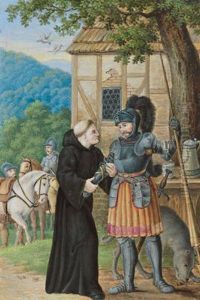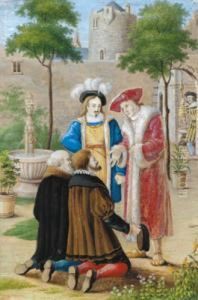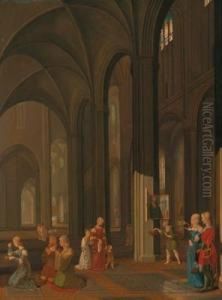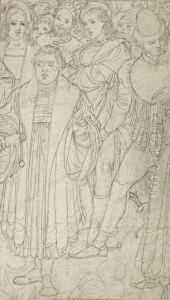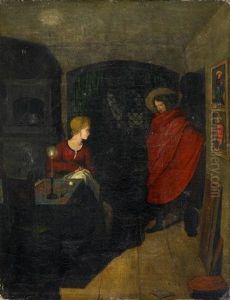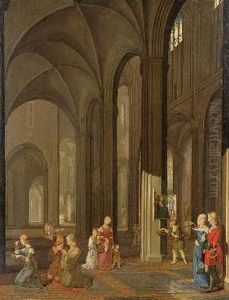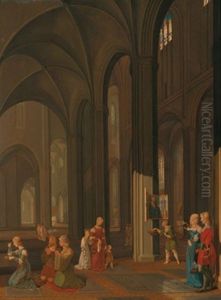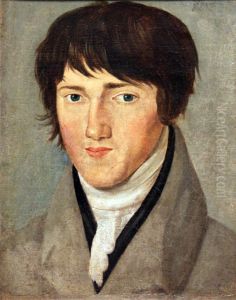Franz Pforr Paintings
Franz Pforr was a German painter, associated with the early Romantic movement and the Nazarene movement, a group of artists who sought to revive honesty and spirituality in Christian art. Born on April 5, 1788, in Frankfurt am Main, Pforr was the son of an engraver and painter, which exposed him to the art world from a young age. Despite his father's death when Franz was only nine, his artistic talents were nurtured, leading him to study at the Vienna Academy of Fine Arts in 1806. It was here that Pforr developed a distinctive style characterized by a return to the simplicity and devoutness found in earlier Renaissance and medieval art.
During his time in Vienna, Pforr became disillusioned with the contemporary art scene, which he found superficial and lacking in moral depth. This discontent led him to form the Lukasbund (Brotherhood of Saint Luke) in 1809 with his friend and fellow artist, Johann Friedrich Overbeck. The group, later known as the Nazarenes, moved to Rome in 1810, seeking inspiration from the city's classical and Renaissance art. The Nazarenes lived a monastic lifestyle, dedicating themselves to creating art that was deeply spiritual and rooted in Christian values. They rejected the formal academic standards of the day and looked to early Renaissance artists for inspiration, aiming to revive what they saw as the golden age of art.
Pforr's work is characterized by its meticulous detail, vibrant colors, and incorporation of religious and historical themes. One of his most significant works is 'The Entry of Emperor Rudolf of Habsburg into Basel in 1273,' which reflects his fascination with the Middle Ages and his desire to convey moral and spiritual messages through his art. Unfortunately, Pforr's career was cut short by his untimely death due to tuberculosis on June 16, 1812, in Albano Laziale, near Rome, at the age of 24. Despite his brief career, Pforr's contributions to the Nazarene movement and his commitment to reviving spiritual values in art left a lasting impact on the Romantic movement and beyond.
